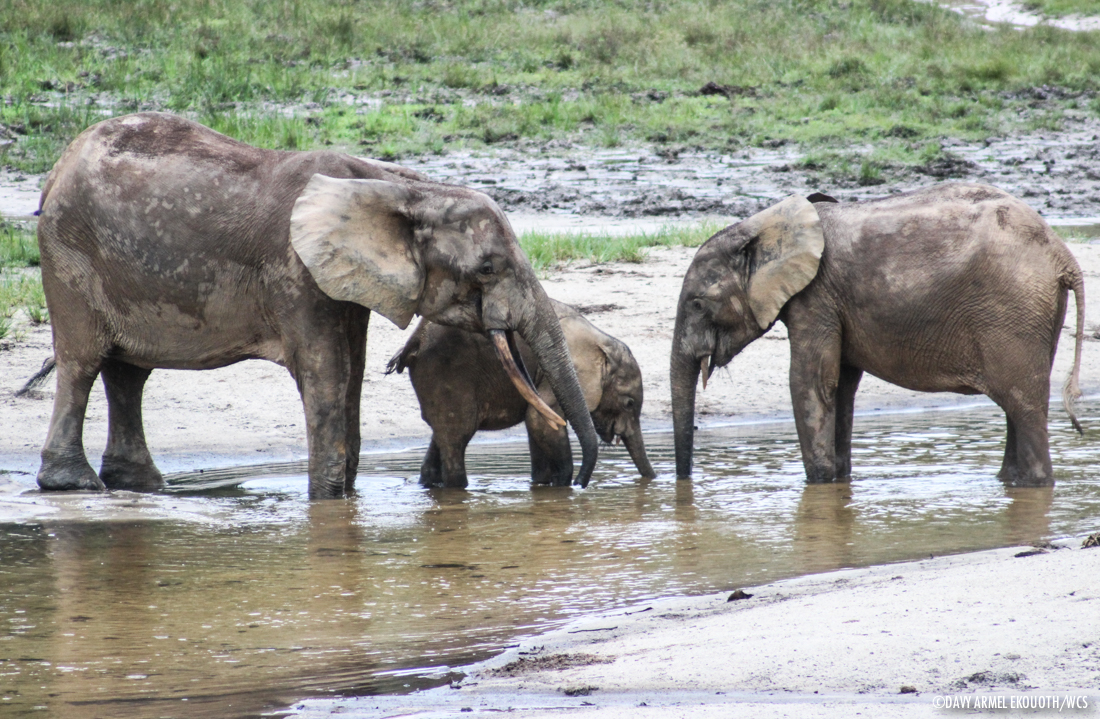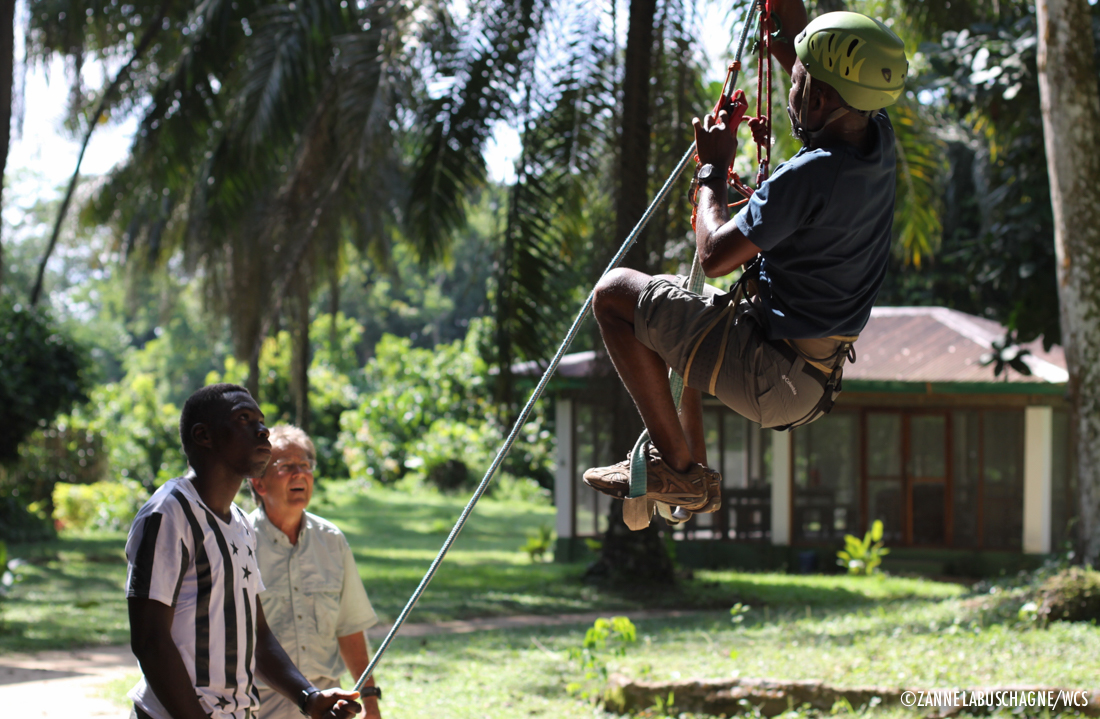
the sound of conservation
Cornell University’s Elephant Listening Project and WCS-Congo are launching a new study using hidden microphones in the forest to better monitor forest elephant populations and movements, pinpoint the gunshots of poachers, and record the biodiversity in Nouabalé-Ndoki National Park, Congo. Any animal (including humans) that makes a loud noise can be detected and recorded by the acoustic devices. Elephants are exceptionally good subjects for acoustic monitoring because they communicate using low frequency rumbles which can travel long distances across the forest and can be easily picked up by the microphones. By counting vocalizations across a grid of microphones, we are trying to estimate the number of elephants and follow their movements in response to food availability, hunting pressures, and logging activity.
Despite elevated poaching pressure outside the park, elephants still seem to frequent the Kabo logging concession to the south of the park. They may be drawn to the secondary vegetation and the numerous salines (mineral rich clearings called bais and yangas in the local language), which outweigh the poaching risks. Understanding how elephants use the park and its periphery, including seasonality, attraction to salines, and response to hunting pressure will help us to better protect them.
”In Congo, acoustic monitoring can help us understand how hunting levels change with logging operations, or in response to different park protection strategies. It will also be able to provide an objective analysis of the effectiveness of new anti-poaching activities.
Analysis of the automatic recording unit data will allow researchers to pick out patterns of gun hunting in and around the park. For example, a study using acoustic recorders in Korup National Park in Cameroun showed that hunting in the protected area increased in the days preceding a regional market day and also showed which areas were most frequently hunted. This information helped rangers modify their patrolling to better counter the threat. In Congo, acoustic monitoring can help us understand how hunting levels change with logging operations, or in response to different park protection strategies. It will also be able to provide an objective analysis of the effectiveness of new anti-poaching activities.

To help speed the analysis of the recordings, ELP has developed sound analysis tools which can automatically identify elephant vocalizations, saving thousands of hours of manually reviewing the sound spectrograms. Using similar automatic sound analysis tools, we are also testing a prototype real-time gunshot detector that can record gunshots within 10 square kilometers of forest and send the signal to an anti-poaching command center for quick response.
An important component of this research is the training of future Congolese scientists and conservationists. Currently four researchers who have been carrying out a survey of large mammals across the entire landscape are being trained on all aspects of acoustic monitoring, including setting up and maintaining the units, tree climbing, using the sound analysis software to visually identify sounds of interest, running the automatic detection software for elephants and gunshots, and managing the copious amounts of data that will be coming from the study.
Every year, university students from Brazzaville will be invited to do short-term internships, using the acoustic recordings to focus on other species groups such as birds, primates, amphibians, or bats. Our hope is that we will be training a new generation of Congolese scientists on next generation conservation technologies.

